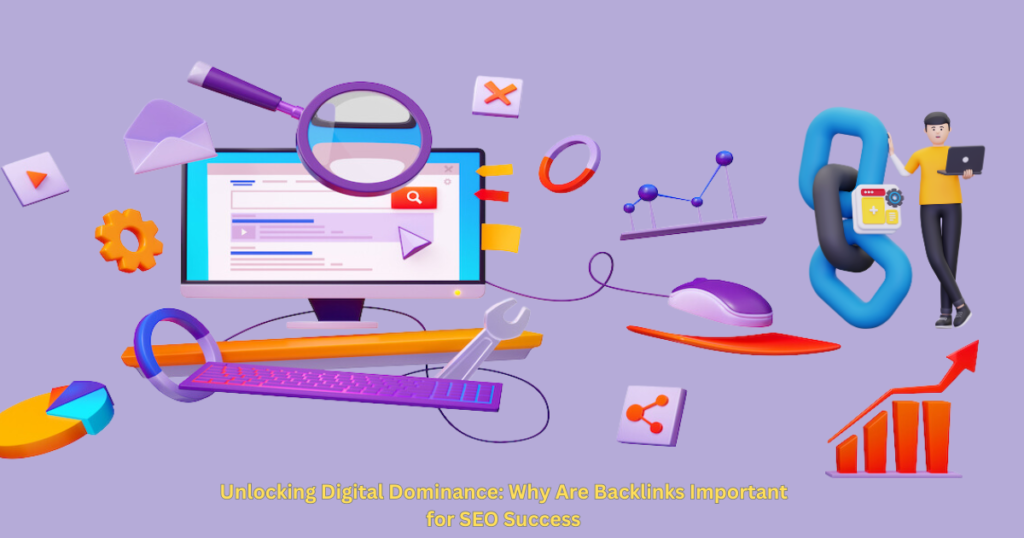People are frequently captivated by the fascinating topic, “What does a backlink look like?” A backlink is a hyperlink that builds a network of linked routes from one webpage to another throughout the vast expanse of the internet. Contrary to conventional expectations of a tangible or static appearance, the visual representation of a backlink is more abstract and dynamic.
Picture it as a network of dynamic pathways, each link representing a connection between websites. The intricacies lie in the evolving patterns and vibrant colours that symbolize the exchange of information. Rather than a static image or a traditional visual, the true essence of a backlink is a complex dance of interconnectedness, adapting and reshaping itself in response to the ever-changing digital environment.
To delve deeper into this visual mystery, you can explore Moz’s interactive guide on backlinks and witness firsthand the dynamic nature of these digital connectors. This visual revelation challenges preconceptions, inviting us to perceive backlinks as active, living entities. These are vital in determining how content is arranged and made visible on the vast network of the internet.
Decoding the Anatomy of a Backlink: From Hyperlinks to SEO Power
At its core, a backlink is simply a hyperlink on one website that points to another. It’s the clickable text or image that, when clicked, whisks you away to a different webpage. But don’t be fooled by its seemingly simple nature; within this hyperlink lies a wealth of information and SEO power. Here’s what makes up a backlink:
The Source Website: This is where the backlink originates. Ideally, it should be relevant to your website’s niche and have a good reputation with search engines. Think of it as the expert you met at the conference, someone respected in your field.
The Anchor Text: The descriptive text or phrase linked to your website. It should be relevant to both the related content and your target audience. Imagine it as your conversation starter; a concise introduction piques the reader’s interest.
The Target URL: This is the URL on your website that the backlink points to. Ensure it leads to relevant and valuable content, not just your homepage. This is where you showcase your expertise, like sharing your research at the conference.
The Link Attributes: These are technical aspects like “rel=nofollow,” which can impact how search engines treat the link. While most backlinks are valuable, nofollow links don’t directly transfer SEO power but benefit brand awareness. Think of them as friendly introductions that don’t endorse your work now but still put you on someone’s radar.
The Power of Backlinks: From Visibility to Authority
So, why are backlinks so crucial for SEO? It all boils down to trust and authority. When a high-quality website links to yours, it’s essentially saying, “This website is worth checking out!” Search engines like Google interpret this as a sign of trust and quality, boosting your website’s ranking in search results for relevant keywords. Imagine receiving a glowing recommendation from the conference expert; suddenly, others take notice and seek your insights.
According to Semrush, websites with the highest organic traffic have an average of 43,100 backlinks, compared to just 40 for websites with low traffic. The correlation is clear: the more valuable backlinks you have, the more likely potential visitors will see you.
Building Your Backlink Arsenal: Strategies for SEO Success
Now that you understand what a backlink looks like and its SEO power, you might wonder how to acquire these valuable “handshakes.” Here are some effective strategies:
Content is King (and Queen): Create high-quality, informative, and engaging content that naturally attracts links from other websites. Think of it as crafting presentations or research papers that impress your conference peers.
Guest Blogging: Share your expertise and insights by contributing valuable articles to relevant websites in your niche. This allows you to reach a wider audience and earn backlinks to your site, expanding your network and influence.
Broken Link Building: Sometimes, websites have broken links leading nowhere. Identify these opportunities and offer your relevant content as a replacement. It’s a win-win: you get a backlink, and the website owner fixes their broken link. Imagine helping a fellow attendee at the conference by sharing insightful resources you have.
Directory Submissions: Submit your website to high-quality online directories in your industry. This can help you gain visibility and earn backlinks, but remember to choose guides with good reputations. Consider it as getting listed in industry directories that reputable professionals use.
Social Media Engagement: Actively engage with your target audience on social media platforms. Shares, mentions, and discussions can sometimes lead to backlinks, building buzz and community around your content. Think of it as networking actively at the conference and fostering meaningful connections.
Remember: Building backlinks takes time and effort. Focus on quality over quantity and prioritize links from relevant, trustworthy websites. Building genuine relationships and offering valuable content is critical to long-term backlink success.
Conclusion:
Beyond their technical structure, backlinks represent a fundamental principle of the web: collaboration and shared knowledge. When websites link to each other, they create a web of information, enriching the online experience for everyone. Understanding what backlinks look like.


